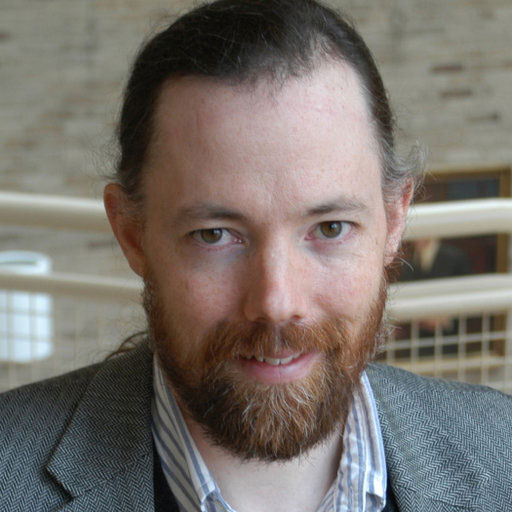Try, try again. Researchers know that great discoveries can take winding, unpredictable paths.
In the face of unfunded grant proposals, conflicting results and people who don’t yet see the vision, research can sometimes feel like failure—but persistence through the process is what often drives innovation. Sometimes, that’s in the form of unexpected results.
“Failure and Persistence in Innovation” is the theme for this year’s Innovation Week, taking place Monday, Oct. 28, through Friday, Nov. 1. The week celebrates Case Western Reserve University’s entrepreneurial spirit with networking sessions, daily workshops, innovation awards and more. See the complete schedule and register for events today.
Researchers can still submit proposals of the best “failed experiments” for Innovation Week’s “Serendipitous Epiphany through Efforts to gain Knowledge” (SEEK) Award contest. Learn more about the SEEK Award, submissions for which are due Thursday, Oct. 24.
But first, get to know Peter J. Thomas and Ronald G. Oldfield—two researchers from the College of Arts and Sciences who shared their stories of perseverance through rejection, failure and challenges to discover.
A commitment to potential

When groups of nerve cells in the brain fire off electrical signals, they sometimes sync up like one ticking clock. Other times, the cells aren’t so coordinated, firing completely separately.
Researchers in theoretical and mathematical neuroscience have long wanted to understand how and when the networks of nerve cells will synchronize or desynchronize. It’s a question Peter J. Thomas has considered for years.
Early in his career, Thomas, professor of mathematics, applied mathematics and statistics, became interested in how “noisy” fluctuations—nerve cells’ seemingly irregular “stochastic” firing patterns—affect the function of neural circuits.
Existing theories of how networks of nerve cells synchronized relied on regular (“noiseless” or “deterministic”) oscillators and a mathematical idea called phase reduction—approximating a complicated system, like a nerve cell, with a simpler one, like a clock with only one hand.
Thomas had a novel idea to redefine phase reduction in a way that would apply equally to both types of oscillators—allowing scientists to study both types of nerve-cell firing with a common approach.
He developed National Science Foundation (NSF) Career proposals around the idea in 2011, and again in 2012, but was rejected both times.
“Nevertheless, I pursued the idea during my 2013-14 post-tenure sabbatical, working with a colleague in Berlin who saw the potential for rebuilding the foundations of the subject,” Thomas said. “Together we persisted in developing the stochastic phase reduction idea and its ramifications, recruiting more colleagues along the way.”
Last year, they published a major paper on the subject, “A Universal Description of Stochastic Oscillators,” which appeared in July of 2023 in the Proceedings of the National Academy of Sciences.
Initial rejection for Thomas was not the end, but part of his path to discoveries, which he continues to explore.
“Today my students and I are extending the framework to networks of coupled stochastic oscillators, and to applications such as improved analysis of EEG and other brain signals,” he said. “”As a great mathematical biologist once said, `Never let anyone convince you that what you’re doing isn’t worthwhile.'”
A decades-long journey to publication

Ronald G. Oldfield, senior instructor in the Department of Biology, can trace his interest in the welfare of aquarium fish to the 1990s, when he was working at a zoo that was heavily investing in animal behavior research.
The research explored how conditions in bears’ and primates’ enclosures affected their behavior, prompting Oldfield to discover an aquatic interest that would set him on a research pursuit spanning more than 20 years.
Around the time he worked at the zoo, Oldfield began his college career as a first-generation student. He was 24 at the time, having spent six years after high school working until he was eligible for financial aid as a non-dependent.
By the time he enrolled in grad school at the University of Michigan, he remained fascinated with the welfare of aquarium fish—an interest his mentors didn’t understand.
“They looked at me like I was speaking another language,” Oldfield said. “The wellbeing of farmed fishes was a major topic of academic research in Europe, but it was unheard of in the U.S.”
So he went to Europe, spending summer 2001 studying fish behavior with the world’s leading fish welfare researcher, Felicity Huntingford, at the University of Glasgow (Scotland). He returned from that experience to a U.S. research environment that still didn’t hold much interest in fish welfare studies.
Though he chose a different topic for his PhD research, he was ultimately undeterred; unbeknownst to his mentors, he also worked on a review assessing the state of fish welfare in zoos, as well as an empirical study assessing the effects of aquarium conditions on fish behavior.
Upon graduation, he accepted a teaching position at CWRU, where he continued to conduct research on his interests in his spare time. His persistence paid off in 2011, when he published the empirical study he began a decade prior.
“It turned out that people did care about the wellbeing of fishes,” he said, pointing to a press release in The Daily that was picked up by more than 100 websites, and by print publications including The New York Times, National Geographic and Ranger Rick magazine.
Oldfield continued to revise and improve the review paper he began at Michigan in 2001. After many rejections, in collaboration with CWRU undergraduate Patrick Bonano, he finally published that work as “Psychological and Social Wellbeing of Bony Fishes in Zoos and Aquariums” last year in Zoo Biology. The article was republished just this week in Animal Sentience.
“The research climate finally seems to be changing,” he said. “It’s possible that my persistence has had some influence on this change in the field.”


